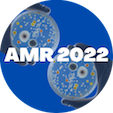Description
Aim : This research aims is to examining antibiotic resistance patterns in district bulandshahr,Uttar Pradesh Government hospital and also in few private hospitals and to explore various ways of curbing the problems caused by the emergence of multiple antibiotic-resistant bacteria Also identify and determine the antibiotic resistance pattern of bacterial pathogens collected from different hospitals in bulandshahr,Uttar Pradesh. It hypothesis in Developing a new antibiotic by determining the antistaphylococcal activity of extracellular substances of Pseudomonas aeruginosa and partially purifying those substances.
Methods : In this study, 51 non repeating multiple antibiotic resistant strains were selected from 146 Gram-negative bacteria collected from hospitals and diagnostic centers in Bulandshahr,UP. Escherichia coli (twenty-two), Klebsiella spp. (twelve), Proteus spp. (four). Pseudomonas aeruginosa (twelve) and Salmonella typhi (one). Their antibiotic resistance profiles showed that all of these strains were resistant to at least five antibiotics, including erythromycin.
METHODS FOR DETERMINE MICROBIAL RESISTANCE:
1. Determination of minimum inhibitory concentration (MIC)
2. Determination of fractional inhibiting concentration (FIC)
3. Determination of minimum haemolytic concentration (MHC)
4. Determination of LD50
Results: Cellular impermeability is one of the major mechanisms of intrinsic resistance of bacteria to various antibiotics. Gram-negative bacteria have a very low permeability barrier, so erythromycin cannot penetrate their outer membranes. For this reason. Gram-negative bacteria express high-level resistance to this antibiotic. Antibiotic susceptibility is enhanced by chemical agents that reduce this impermeability barrier
In this study used Ceragenin CSA-13 to increase erythromycins' activity against a variety of species and genera of pathogenic bacteria. The MIC values of erythromycin and Ceragenin CSA-13 were determined for various test bacterial strains. Ceragenin CSA-13's MIC values ranged between 2 and 8pg mg-1 for the 51 bacterial strains selected .Testing with various concentrations of Ceragenin CSA-13, it was observed that minimum haemolytic concentration (MHC) of this compound is 5pg ml-1 which is 10 times greater than 0.5pg mb1, the effective concentration of Ceragenin CSA-13 for permeabilizing bacterial outer membrane.
The results suggest that Ceragenin CSA-13 may be effective against multiple antibiotic-resistant bacteria, in addition to conventionally used hydrophobic antibiotics. Such an approach is useful to curb the therapeutic crisis owing to emerging antimicrobial resistance partially. Developing new and novel antibiotics is also necessary to combat the alarming situation raised by multi-drug resistant pathogen emergence and reemergence.
Conclusion: Thus, this study approaches to enhance the efficacy of erythromycin towards Gram-negative pathogens and to find out a substance having antistaphylococcal activity may also contribute extensively to the international lookup and drug development application in overcoming therapeutic disaster owing to rapid emergence of multi-drug resistant (MDR) bacteria.
